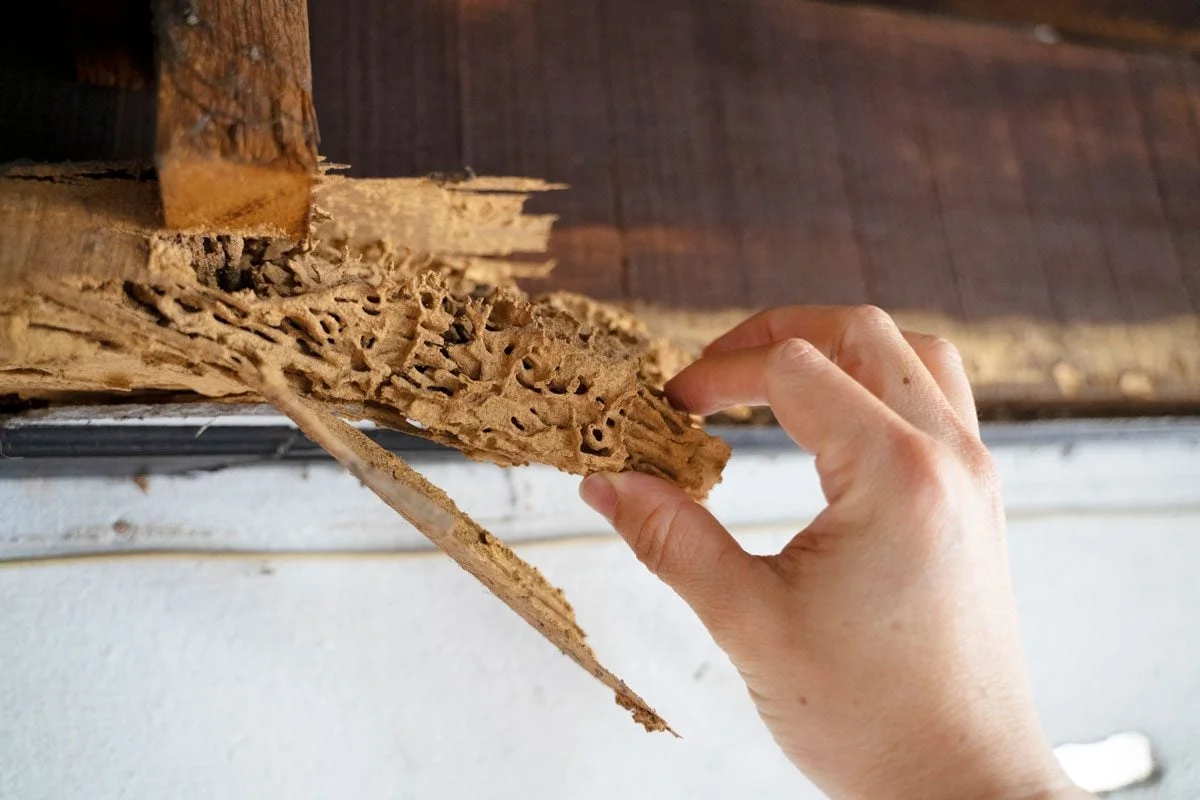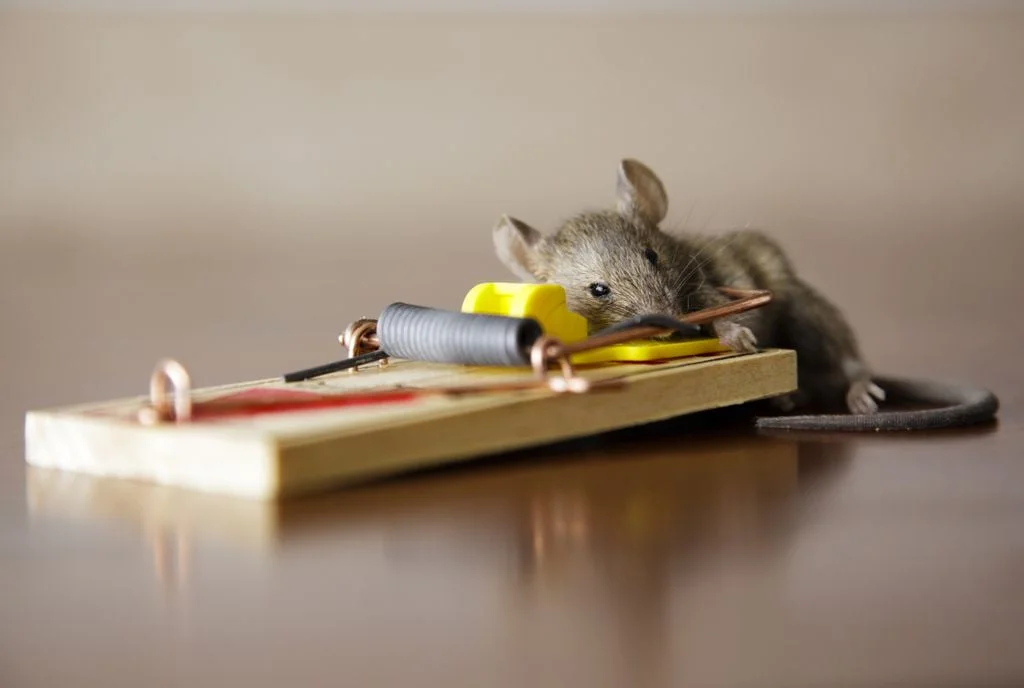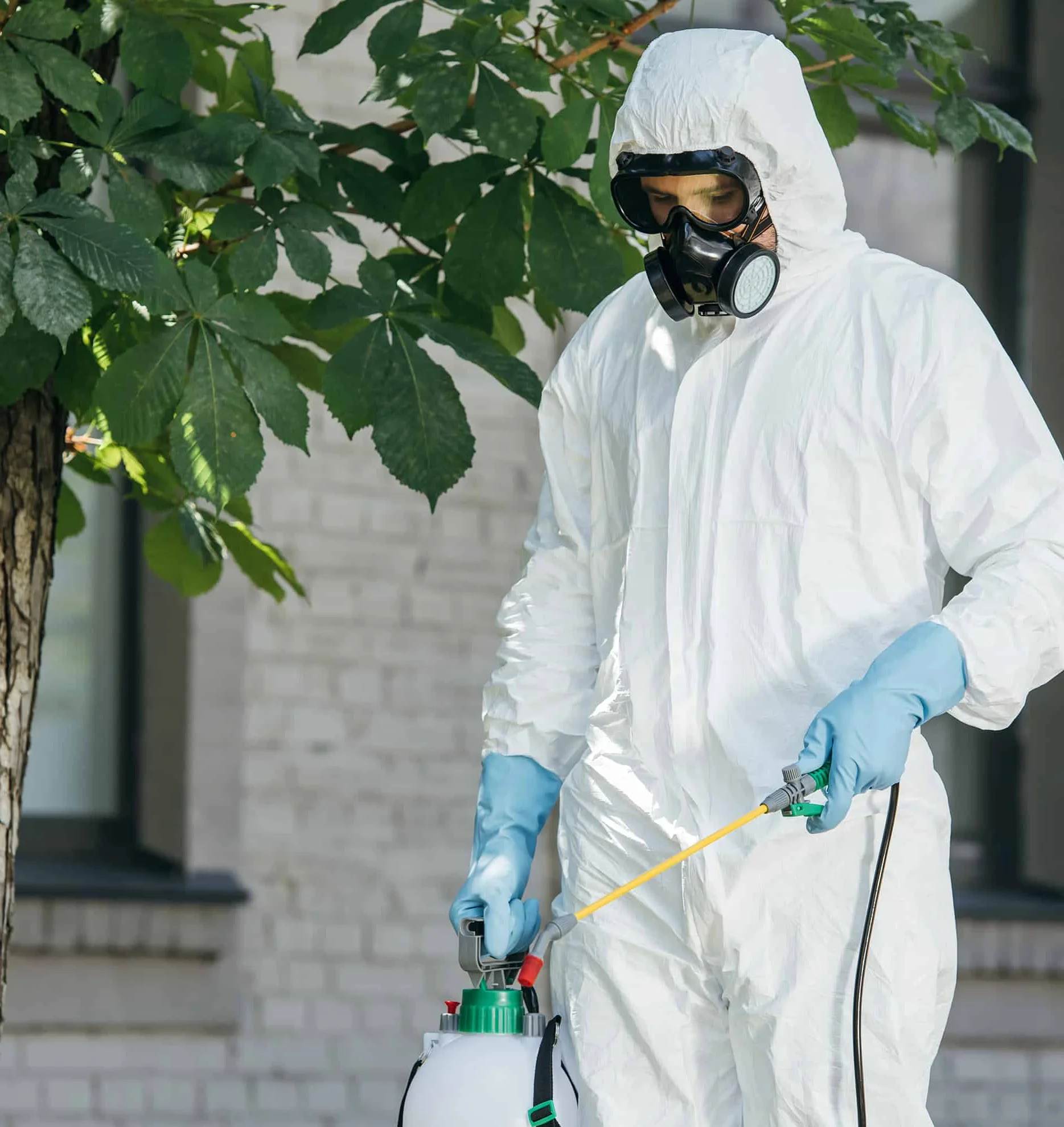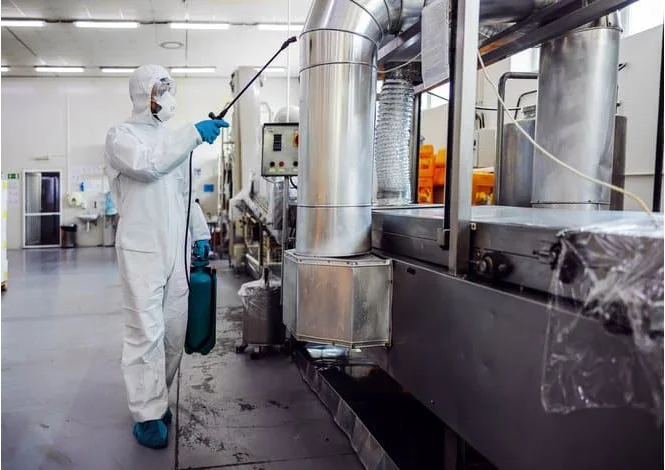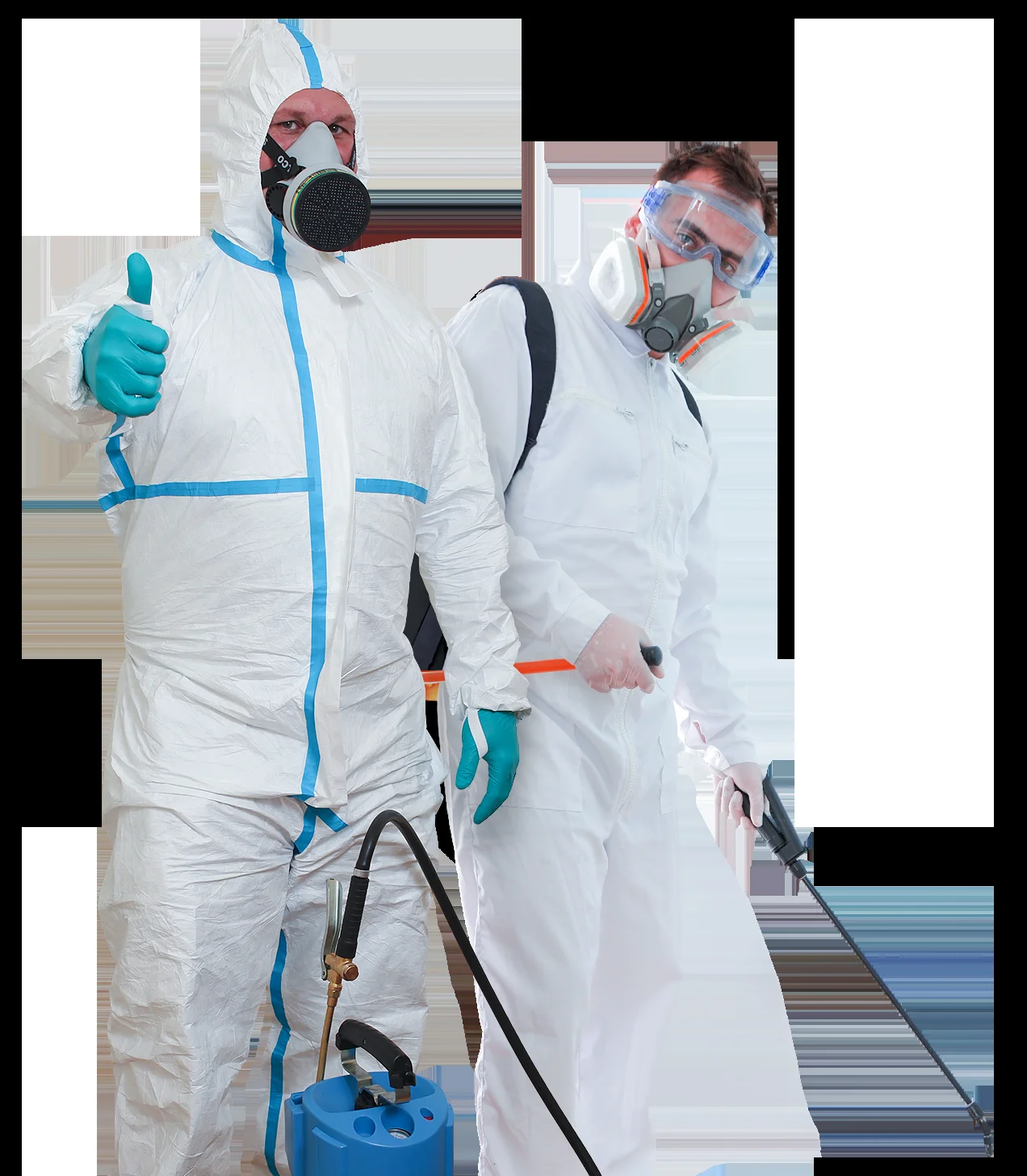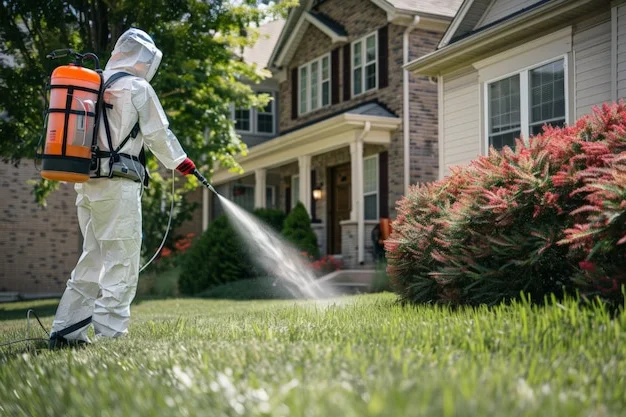From the western High Plains to the eastern Ozark Plateau, Kansas presents diverse pest ecosystems shaped by the state's unique blend of prairie landscapes, agricultural dominance, and distinct regional climates. The Sunflower State's continental weather patterns—marked by hot summers, cold winters, and dramatic seasonal transitions—create ideal conditions for various pest species, whose activity follows predictable yet intense seasonal cycles. Effective pest control in Kansas requires specialized knowledge of these regional challenges, agricultural influences, and targeted approaches that address both urban and rural pest pressures.
Properties across Kansas face ongoing pest challenges that can damage structures, affect health, threaten agricultural productivity, and diminish quality of life in both rural and urban settings. Whether addressing termite issues in eastern woodlands, managing prairie pests in western regions, or controlling agricultural-influenced invaders throughout the state, local professional exterminators provide essential expertise tailored to Kansas' specific conditions. This guide explores common Sunflower State pest problems, effective management strategies including eco-friendly pest solutions, and why Kansas' distinctive environmental factors make professional knowledge particularly valuable for lasting protection.
Dealing with persistent Kansas pests? Our Sunflower State specialists offer
emergency pest control
24/7 and comprehensive
property inspections throughout Kansas.
Contact us today for prompt assistance!
Pest Control Challenges Specific to Kansas
Kansas' unique environment creates distinctive pest control challenges that require specialized approaches. Here's why pest management in the Sunflower State demands expert attention:
-
Dramatic climate variations Kansas spans multiple climate zones, with significant differences between western and eastern regions. Western Kansas features semi-arid conditions, while eastern counties receive substantially more rainfall. This climate diversity creates dramatically different pest pressures across the state, requiring region-specific control strategies and timing that accommodate these varied environments.
-
Extreme weather patterns Kansas experiences some of the nation's most dramatic weather fluctuations, with temperature swings exceeding 100 degrees annually and rapid seasonal transitions. These extreme patterns drive intense pest behavior cycles, including spring emergence surges, summer population explosions, and concentrated fall invasion periods as pests aggressively seek shelter before winter.
-
Agricultural dominance As one of America's leading agricultural producers, Kansas' extensive farming operations directly influence pest dynamics statewide. Field crops create breeding reservoirs for various pest species, while seasonal farming activities trigger predictable pest migrations toward structures, particularly during planting and harvest cycles when field disturbances displace established pest populations.
-
Diverse housing stock Kansas features varied architectural styles from historic limestone structures in eastern communities to prairie farmhouses, mid-century ranch homes, and contemporary construction. This diverse housing stock presents different pest vulnerabilities based on building materials, foundation types, and construction methods, requiring adaptable inspection and treatment approaches.
-
Urban-rural interfaces Kansas' growing cities increasingly border agricultural operations and natural grasslands, creating transition zones where pests from disturbed habitats seek new territories. These urban-rural boundaries experience unique pest pressures, particularly in expanding communities around Wichita, Kansas City, and other developing areas where construction activities further disrupt existing pest habitats.
Understanding these Kansas-specific challenges is crucial for effective pest management. Professional pest control services develop customized treatment plans that address these regional factors, providing targeted protection for the Sunflower State's distinctive environmental conditions.
Common Pests in Kansas
Kansas' varied landscapes and continental climate support numerous pest species that impact properties differently based on location, season, and surrounding environment. Here are the most common invaders that plague the Sunflower State:
Termites
Termite damage discovered during inspection of a Kansas property
Eastern subterranean termites pose a significant threat to Kansas properties, with activity particularly intense in the eastern third of the state where higher rainfall and greater tree coverage create ideal conditions for these wood-destroying pests. The dividing line between moderate and heavy termite pressure zones runs roughly north-south through central Kansas, with eastern counties facing greater risk. Annual termite-related property damage in Kansas runs into the millions, making prevention and early detection critical.
Professional termite inspection and treatment combines thorough structural evaluation, soil treatment barriers, targeted colony elimination, and ongoing monitoring systems. For Kansas' many older homes, specialized inspection techniques identify hidden termite activity, while preventative treatments provide long-term protection against these destructive pests. Spring termite swarms, typically occurring from March through May as temperatures consistently warm, signal peak reproductive activity and heightened risk for new colony establishment.
Spiders
Professional inspection for spider activity in a Kansas residence
Kansas hosts numerous spider species, with brown recluse and black widow spiders causing the most concern due to their medically significant venom. Brown recluse spiders are particularly common throughout the state, establishing populations in undisturbed areas of homes and outbuildings where they can remain hidden until accidentally disturbed. While most Kansas spiders are beneficial predators of other pests, the presence of venomous species creates health concerns that often require professional management.
Effective spider control begins with thorough inspection of typical harborage areas, including attics, crawlspaces, closets, storage areas, basements, and outbuildings. Professional management combines web removal, targeted treatment of activity zones, dust applications in void areas where spiders hide, and ongoing monitoring to prevent reinfestation. For Kansas properties with confirmed brown recluse activity, comprehensive treatment programs address both the structure and surrounding landscape to reduce population levels and prevent future establishment.
Rodents
Professional rodent control measures being set at a Kansas home
Kansas properties contend with several rodent species, with house mice and Norway rats common in urban areas, while deer mice and field mice more frequently affect rural properties. Rodent activity intensifies during fall and winter as cooling temperatures drive these pests indoors seeking warmth and shelter, with invasion pressure particularly strong after harvest activities displace field populations from agricultural operations.
Comprehensive rodent control begins with thorough inspection to identify entry points, harborage areas, and activity patterns. Professional management combines exclusion work to seal potential access routes, targeted trapping systems, protected baiting methods where appropriate, and ongoing monitoring to prevent reinfestation. For Kansas' rural properties, specialized perimeter protection strategies address the heightened pressure from field rodents during seasonal transitions, while urban properties benefit from regular monitoring and maintenance of common entry points.
Stinging Insects
Kansas' prairie landscapes and varied habitats support numerous stinging insect species, including multiple wasp varieties, hornets, and honeybees. These social insects become increasingly problematic during summer and early fall when colonies reach peak population levels and territorial aggression increases. While beneficial as pollinators and predators of other pests, stinging insects can create significant safety hazards when nests are established near human activity areas.
Professional management of stinging insects involves proper species identification, safe removal or treatment of established nests, and preventative measures to discourage future colonization. Early-season treatments targeting queen wasps and initial nests provide the most effective protection against large colony development. For properties with historic stinging insect problems, regular inspection of common nesting sites prevents dangerous populations from becoming established during peak season.
Overwintering Pests
Applying preventative barrier treatment for overwintering pests on a Kansas home
Kansas' cold winters drive several insect species to seek shelter in structures during fall months. Boxelder bugs, Asian lady beetles, stink bugs, and cluster flies commonly invade homes and businesses as temperatures drop, congregating on sun-warmed exterior walls before finding entry points into attics, wall voids, and living spaces. While not structurally damaging, these seasonal invaders emerge indoors throughout winter during warm periods, creating persistent nuisance situations.
Successful management requires precisely timed preventative treatments applied before invasion periods begin, typically in early fall before the first frost. Professional services include exterior treatments of gathering areas, targeted applications to likely entry zones, and exclusion work to seal access points. For Kansas properties with historical issues, comprehensive prevention programs during the critical pre-invasion window provide reliable protection against these predictable seasonal pests.
Eco-Friendly Pest Control for Kansas Properties
Kansas' valuable natural resources—from the tallgrass prairies to the state's vital agricultural lands and waterways—create strong demand for environmentally responsible pest management approaches. Modern eco-friendly pest solutions protect homes and businesses while minimizing environmental impact through targeted application methods, reduced-risk product selections, and integrated management strategies that address root causes rather than symptoms.
Professional services implement Integrated Pest Management (IPM) principles that prioritize inspection, exclusion, habitat modification, and biological controls when possible, reserving targeted chemical interventions as a last resort. This sustainable methodology particularly benefits families with young children, pet owners, properties near sensitive ecosystems, organic gardeners, and Kansas' many agricultural operations where environmental stewardship and pollinator protection are essential considerations.
Environmental Commitment
Kansas pest control specialists understand the importance of protecting the state's natural resources and agricultural productivity, implementing management approaches that effectively address pest issues while respecting the Sunflower State's environmental integrity.
Below is a comparison of different eco-friendly pest control methods highlighting their benefits for Kansas properties:
| Treatment Method |
Benefits |
Ideal Use in Kansas |
| Targeted Application Methods |
Places minimal product amounts only where pests travel, harbor, or enter structures, dramatically reducing overall chemical use while maintaining effectiveness.
|
Urban properties where minimizing chemical exposure is important, homes with children and pets, and properties near Kansas' waterways and conservation areas.
|
| Exclusion Techniques |
Creates physical barriers preventing pest entry without any chemical use, providing long-term protection with zero environmental impact or ongoing maintenance requirements.
|
Rodent prevention in both urban and rural properties, sealing against seasonal invaders like overwintering insects, and securing structures against prairie wildlife intrusions—particularly valuable during Kansas' pronounced seasonal transitions.
|
| Habitat Modification |
Alters environmental conditions that attract and support pest populations through landscape changes, moisture management, and sanitation improvements rather than chemical interventions.
|
Preventing harborage areas for brown recluse spiders, reducing conditions that attract termites, and minimizing landscape features that support stinging insect nesting—especially important in Kansas' varied climate regions.
|
| Pollinator-Friendly Approaches |
Employs techniques and products designed to minimize impact on beneficial insects, protecting Kansas' critical agricultural pollinators while still managing pest species effectively.
|
Properties near agricultural operations, homes with gardens, and communities where pollinator protection is a priority consideration for environmental sustainability and agricultural productivity.
|
| Reduced-Risk Products |
Utilizes newer generation pesticides and botanical-based solutions designed specifically for lower environmental impact with faster environmental breakdown.
|
Properties near Kansas' rivers and lakes, homes with organic gardens, and agricultural interfaces where minimizing environmental persistence of products is essential for ecosystem health.
|
Residential & Commercial Pest Control Throughout Kansas
Residential Pest Protection
Kansas homes face varied pest challenges influenced by location, architectural style, and surrounding environment. Residential pest protection programs are tailored to address the specific needs of different Kansas properties, from urban Wichita and Kansas City neighborhoods to suburban communities, small towns, and rural homesteads throughout the state.
Professional services offer customizable protection plans against Kansas' most common household pests, with particular emphasis on preventing seasonal invaders, eliminating termite and brown recluse threats, and maintaining comfortable living spaces free from nuisance and health-threatening pests. Treatment schedules align with Kansas' distinct seasonal patterns, with increased attention during critical transition periods when pest pressure intensifies due to changing weather conditions and agricultural activities.
Commercial Pest Control
From restaurants in Wichita to healthcare facilities in Topeka, grain storage operations in western counties, manufacturing facilities throughout the state, and educational institutions in communities large and small, Kansas businesses require specialized pest management programs that protect operations, reputation, and regulatory compliance. Commercial pest control services address distinct industry challenges with targeted protocols designed for each business category.
Professional commercial services provide comprehensive documentation supporting audit requirements, discreet service scheduling that minimizes operational disruption, and emergency response capabilities for time-sensitive situations. Kansas' substantial food production, processing, and agricultural storage sectors particularly benefit from specialized programs designed to maintain the highest standards of sanitation and pest prevention while meeting stringent regulatory requirements for these sensitive industry categories.
From residential pest protection plans to customized
commercial pest control solutions, we have properties throughout Kansas covered –
schedule your service now and keep your
property pest-free year-round!
Why Choose Local Experts in Kansas?
When it comes to protecting your Kansas property from pests, working with local experts offers distinct advantages. A local pest control company understands the region's specific challenges and truly cares about the communities they serve. Here's why choosing local Kansas specialists makes a significant difference:
-
Knowledge of regional pest patterns Local technicians understand how Kansas' diverse regions—from the semi-arid western plains to the humid eastern woodlands—experience different pest pressures and seasonal cycles. This regional expertise allows for precisely targeted treatments and timing based on local experience rather than generic approaches used by national companies unfamiliar with Sunflower State specifics.
-
Experience with Kansas architecture Local experts are familiar with the distinctive construction methods found throughout the state, from historic limestone structures to prairie farmhouses, mid-century developments, and contemporary construction. This architectural knowledge helps identify vulnerable areas and implement effective protection strategies specifically suited to each property type.
-
Understanding of agricultural influences Kansas' position as a leading agricultural producer creates unique pest dynamics that affect even urban properties. Local professionals understand these agricultural influences—including seasonal pest movements triggered by planting and harvesting activities—allowing for anticipatory treatments that prevent problems before they develop.
-
Familiarity with local regulations Kansas communities maintain specific regulations regarding pesticide applications, wildlife management, and treatment methods, particularly around watersheds and conservation areas. Local pest professionals navigate these requirements daily, ensuring all services remain fully compliant with state and municipal ordinances.
-
Weather responsiveness Kansas' sometimes extreme and rapidly changing weather patterns can dramatically affect pest activity and treatment timing. Local specialists monitor regional weather trends and can adjust service schedules accordingly, ensuring applications occur during optimal conditions for both effectiveness and environmental safety.
By choosing local professional exterminators with deep knowledge of Kansas' specific pest challenges, property owners receive more effective, regionally-appropriate solutions than generic approaches used by those unfamiliar with the Sunflower State's unique conditions.
Regional Pest Control Services Throughout Kansas
Different regions of Kansas face unique pest challenges based on geography, climate variations, and environmental features. Professional pest control specialists understand these regional differences:
Eastern Kansas
Including: Kansas City, Topeka, Lawrence, Emporia, Manhattan, Leavenworth
Eastern Kansas features higher annual rainfall, greater tree coverage, and more substantial waterways than western regions, creating different pest dynamics. The area's increased moisture levels support termite activity, with eastern counties falling into higher termite pressure zones than western parts of the state. Urban centers like Kansas City and Topeka contend with established urban pest populations including rodents and cockroaches, while the region's abundant vegetation supports larger populations of stinging insects, ticks, and various garden pests during warm months. The higher humidity also creates more favorable conditions for moisture-dependent occasional invaders.
Central Kansas
Including: Wichita, Salina, Hutchinson, Great Bend, McPherson, Newton
This transitional region experiences aspects of both eastern and western pest challenges, creating diverse management needs. Wichita and surrounding communities combine urban pest issues with agricultural influences from surrounding farming operations. The region's mix of older neighborhoods and newer developments requires varied treatment approaches, while the agricultural activity creates seasonal pest pressures, particularly during harvest periods. The central zone experiences statewide pest issues like brown recluse spiders and overwintering insects, while also contending with both eastern moisture-loving pests and western drought-adapted species depending on seasonal patterns.
Western Kansas
Including: Dodge City, Hays, Garden City, Liberal, Colby, Goodland
Western Kansas' semi-arid climate creates distinctly different pest pressures than eastern regions. The area typically experiences lower annual rainfall, higher average winds, and more pronounced drought periods, supporting different pest species adapted to these conditions. While termite pressure is generally lower than eastern counties, the region contends with various prairie-adapted pests that thrive in drier environments. Agricultural storage pests present significant challenges in this major grain-producing region, while the extreme temperature fluctuations drive intense seasonal pest behaviors, particularly during transition periods. The region's rural communities often face different pest management needs than more densely populated eastern areas.
Southern Kansas
Including: Winfield, Arkansas City, Wellington, Coffeyville, Independence, Pittsburg
Southern Kansas counties along the Oklahoma border experience slightly different pest patterns influenced by the region's position at the northern edge of southern pest territories. This area often encounters certain pest species moving northward from Oklahoma during warmer seasons, including some ant varieties and occasional invaders less common in northern Kansas counties. The region's combination of agriculture, smaller urban centers, and natural areas creates varied pest management needs, with properties often experiencing influences from multiple habitat types. Termite pressure increases in these southern counties, particularly in communities with established tree coverage and older structures.
Top Cities for Pest Control in Kansas
Professional pest control services are available throughout the Sunflower State. Below are some of the major Kansas cities where quality pest management is especially important:
Wichita
As Kansas' largest city, Wichita presents diverse pest management challenges across its varied neighborhoods and architectural styles. The city's position along the Arkansas River creates moisture corridors that support mosquito breeding and contribute to termite pressure in surrounding areas. Established neighborhoods contend with mature landscaping and aging infrastructure that provide harborage opportunities for pests, while rapidly expanding suburban communities experience different pressures as development disturbs existing pest habitats. The metropolitan area's extensive park system provides habitat for various insect species that can affect nearby properties, while the surrounding agricultural operations influence seasonal pest movements, particularly during planting and harvest activities. Wichita properties face year-round pest pressure with pronounced seasonal surges, requiring comprehensive management programs that address both established urban pest populations and seasonal invaders influenced by weather patterns and agricultural cycles.
Lawrence
This vibrant university community in eastern Kansas experiences unique pest management challenges influenced by its river valley setting, historic neighborhoods, and distinctive occupancy patterns in student housing areas. Lawrence's position along the Kansas River creates moisture conditions that support mosquito breeding and seasonal pest activities related to the waterway. The large student population creates seasonal occupancy fluctuations in many multi-unit properties, affecting pest establishment patterns and treatment timing. The community's wealth of historic structures, particularly in neighborhoods surrounding the University of Kansas campus, creates varied pest vulnerabilities based on building age and construction methods. The city's combination of older established neighborhoods, student housing areas, and newer developments requires tailored pest management approaches addressing the specific challenges of each property type, while maintaining the community's strong environmental focus through sustainable treatment methods.
Kansas Service Coverage Map
Seasonal Pest Guide for Kansas
Spring (March-May)
- Termite swarms emerge
- Ant colonies become active
- Overwintering pests exit hibernation
- Stinging insect queens establish new nests
Recommendation: Schedule annual termite inspection, implement preventative perimeter treatments as temperatures consistently rise, and address emerging ant and stinging insect activity before full establishment.
Summer (June-August)
- Spider activity increases
- Stinging insect colonies expand rapidly
- Mosquito populations peak
- Brown recluse activity becomes more noticeable
Recommendation: Focus on spider management, stinging insect nest removal, and maintaining protective barriers during Kansas' hottest season with continuous pest activity.
Fall (September-November)
- Overwintering insects seek shelter
- Rodents begin moving indoors
- Harvest activities displace field pests
- Spider movement increases toward structures
Recommendation: Critical window for preventing overwintering pest invasions and implementing rodent exclusion before winter weather arrives.
Winter (December-February)
- Rodent activity concentrated indoors
- Overwintering insects emerge during warm spells
- Indoor spider issues continue
- Preparation for spring pest emergence
Recommendation: Focus on interior pest management addressing rodents, overwintering insects, and indoor spider activity during Kansas' coldest months.
Kansas' four distinct seasons create predictable patterns of pest activity, with each season presenting different challenges requiring specific preventative approaches. Professional pest control services adjust their strategies throughout the year to address these seasonal patterns, providing ongoing protection during critical transition periods when pest pressure intensifies due to changing weather conditions and agricultural activities.
What Our Kansas Clients Say
"After years of dealing with brown recluse spiders in our Wichita home, their comprehensive treatment program has finally brought us peace of mind. Their technicians truly understand how to address these persistent pests in a way that's safe for our family while still being effective."
- Jennifer K., Wichita
★★★★★
"When we discovered termite damage in our historic Lawrence home, we needed experts who understood both effective treatment and preservation of our property's character. Their targeted approach eliminated the problem without compromising the integrity of our 1920s structure."
- Michael & Sarah T., Lawrence
★★★★★
"Running a restaurant in Kansas City means pest prevention isn't optional—it's essential. Their commercial program provides thorough coverage with discreet service that never disrupts our operation. Their documentation also makes health inspections stress-free."
- David L., Kansas City
★★★★★
Frequently Asked Questions
How do Kansas' regional climate differences affect pest control strategies?
Kansas spans multiple climate zones, creating distinctly different pest pressures and requiring region-specific treatment approaches across the state. Eastern Kansas receives substantially more rainfall (40+ inches annually) compared to western regions (under 20 inches), resulting in higher termite pressure, increased moisture-loving pest activity, and different seasonal emergence timing in eastern counties. Western Kansas' semi-arid conditions support different pest species adapted to drier environments, requiring specialized product selections and application techniques. Additionally, these climate differences create a 2-3 week variance in seasonal pest activity timing between regions—eastern Kansas typically experiences spring pest emergence and fall invasions earlier than western counties. Temperature extremes also vary, with western regions experiencing more dramatic temperature swings and drier conditions that affect product performance and retreatment schedules. Our technicians are trained to adjust treatment methods, product selections, and seasonal timing based on your specific location within Kansas, ensuring optimized protection regardless of which regional climate zone your property occupies.
What makes brown recluse spider management in Kansas different from other states?
Kansas falls within the heart of brown recluse territory, creating higher population density and unique management challenges compared to peripheral states where these spiders are less established. Several factors differentiate Kansas brown recluse management: First, our state's combination of hot summers and cold winters drives more pronounced indoor movement cycles, with spiders retreating deeper into structures during winter and expanding activity during summer, requiring seasonally-adjusted treatment strategies. Second, Kansas' prevalent housing styles—particularly crawlspaces, limestone foundations, and older attic designs—create ideal harborage conditions that require specialized treatment approaches targeting these specific structural elements. Third, established brown recluse populations in Kansas often occupy multiple areas simultaneously (attics, wall voids, basements, and outbuildings), necessitating comprehensive whole-property approaches rather than spot treatments. Kansas' brown recluse populations also demonstrate remarkable persistence, with established colonies potentially spanning generations within the same structure, requiring long-term management strategies rather than one-time treatments. Our approach combines targeted void treatments, systematic harborage reduction, regular monitoring of activity zones, and customized prevention strategies based on property-specific risk factors—all calibrated to address Kansas' particularly challenging brown recluse dynamics.
How should Kansas homeowners prepare for the fall pest invasion season?
Fall represents a critical prevention window for Kansas homeowners as cooling temperatures trigger significant pest migrations toward structures. We recommend a comprehensive approach beginning in late August to early September—before the first frost but as temperatures begin cooling noticeably. Start with exterior preparation: trim vegetation away from foundations, eliminate leaf accumulation and debris around the structure, and clean gutters to reduce harborage areas for pests preparing to overwinter. Conduct a thorough exterior inspection focusing on potential entry points: seal gaps around utility penetrations, repair damaged door sweeps and weather stripping, install mesh over vents, and address foundation cracks. For overwintering insects like boxelder bugs and Asian lady beetles that congregate on sun-exposed exterior walls, professional preventative treatments applied to these gathering areas and potential entry zones provide significant protection when timed correctly. For rodent prevention, implement exclusion measures that address common entry points before mice and rats begin seeking winter shelter. Taking these steps during this critical late summer/early fall window provides much better protection than reacting after pests have already established indoor populations, particularly in Kansas where seasonal transitions can occur rapidly with dramatic temperature drops.
Are your treatments safe for families, pets, and Kansas' agricultural environment?
Absolutely. Our Kansas technicians receive extensive training in modern, environmentally responsible pest management approaches that effectively control pests while minimizing impact on non-target organisms. We utilize several key strategies to ensure safety: precision targeting that places products only where pests travel or harbor (leaving most areas untreated), establishing buffer zones around sensitive areas like play equipment and pet spaces, selecting products that break down rapidly in the environment, and emphasizing non-chemical control methods wherever possible. For properties near agricultural operations, we implement additional precautions including pollinator-friendly approaches that minimize impact on beneficial insects essential to crop production. Our service protocols comply with all Kansas environmental regulations and watershed protection guidelines while still providing effective pest management for your property. We're particularly mindful of Kansas' agricultural importance, implementing approaches that protect both your property and the state's environmental integrity. All products are applied according to label instructions by licensed professionals, ensuring both effectiveness and safety for your family, pets, and the surrounding environment.

